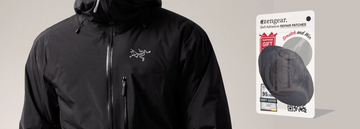Down vs. Synthetic Insulation: Which is Right for You
by Emily Jannet on Nov 13, 2023
When it comes to staying warm in cold weather, insulation is key. But with various types of insulation available, how do you choose between down and synthetic. In this comprehensive guide, we'll delve into the world of insulation to help you make an informed decision. Whether you're an outdoor enthusiast, a traveler, or simply looking to stay cozy in the winter, understanding the differences between down and synthetic insulation is essential.
Down vs. Synthetic
The Basics of Insulation
Insulation is what keeps you warm by trapping and retaining heat. Both down and synthetic insulation serve this purpose, but they have different characteristics and performance.
Down Insulation
- Down insulation is natural and derived from duck or goose feathers.
- Known for its exceptional warmth-to-weight ratio.
- Provides excellent loft, making it highly compressible.
- Ideal for cold, dry conditions.
Synthetic Insulation
- Synthetic insulation is man-made from polyester fibers.
- Generally more affordable than down.
- Maintains insulation properties even when wet.
- Suitable for wet and damp conditions.
Warmth-to-Weight Ratio
When choosing insulation, the warmth-to-weight ratio is crucial. It indicates how effectively the insulation retains heat without adding excessive bulk or weight.
Down's Superior Warmth
Down insulation is renowned for its unbeatable warmth-to-weight ratio. This means it can keep you toasty without weighing you down. It's a top choice for backpackers and outdoor enthusiasts.
Synthetic's Resilience
While synthetic insulation may not match down's warmth-to-weight ratio, it shines in wet conditions. Even when drenched, synthetic insulation retains its insulating properties. This makes it a reliable option for rainy adventures.
Durability
Durability is a vital factor to consider, especially if you plan to use your gear for an extended period.
Down's Longevity
With proper care, down insulation can last for many years. Regular maintenance, such as fluffing and drying, is essential to preserve its loft and effectiveness. Aslo, down filled jackets can be easily patched.
Synthetic's Robustness
Synthetic insulation is hardier and can withstand rougher treatment. It's a better choice if you anticipate exposing your gear to challenging conditions.
Weight and Packability
The weight and packability of your insulation are crucial if you're an avid traveler or outdoor enthusiast.
Down's Featherweight Advantage
Down insulation is incredibly lightweight and packable. It compresses to a small size, saving space in your backpack.
Synthetic's Bulkier Nature
Synthetic insulation tends to be bulkier and less compressible. If space and weight are significant concerns, down might be the better option.
Allergies and Ethical Concerns
Your choice of insulation can also be influenced by allergies and ethical considerations.
Down and Allergies
Some individuals may have allergies to down feathers, making synthetic insulation a more suitable choice.
Ethical Concerns with Down
There are ethical concerns regarding the sourcing of down insulation. Some people prefer synthetic options to avoid contributing to animal welfare issues.
Water Resistance
Water resistance is a critical aspect, especially if you expect to encounter rain, snow, or wet conditions.
Down's Vulnerability
Down insulation is highly susceptible to moisture. When wet, it loses its insulating properties and takes a long time to dry.
Synthetic's Resilience
Synthetic insulation is water-resistant and retains its insulating properties even when exposed to moisture.
Environmental Impact
Environmental considerations have become increasingly important in the selection of insulation materials.
Down's Sustainable Practices
Many companies are adopting sustainable practices in sourcing down. Look for products that use responsibly-sourced down to reduce your environmental footprint.
Synthetic's Eco-Friendly Aspects
Synthetic insulation is not animal-derived, making it a cruelty-free and eco-friendly choice.
FAQs
- Is down or synthetic insulation warmer?
Down insulation is warmer than synthetic insulation due to its superior warmth-to-weight ratio.
- Which insulation is better for wet conditions?
Synthetic insulation is the better choice for wet conditions as it retains insulation properties even when wet.
- Are there ethical concerns with down insulation?
Yes, there are ethical concerns with down insulation due to the sourcing of feathers. Some individuals prefer synthetic options to avoid contributing to animal welfare issues.
- What is the primary advantage of down insulation?
The primary advantage of down insulation is its exceptional warmth-to-weight ratio, making it ideal for cold, dry conditions.
- How can I make down insulation more water-resistant?
To make down insulation more water-resistant, you can use a water-repellent treatment or opt for products that incorporate hydrophobic down.
- Which insulation is more eco-friendly?
Synthetic insulation is more eco-friendly as it is not animal-derived and avoids ethical concerns related to animal welfare.
Conclusion
Choosing between down and synthetic insulation ultimately depends on your specific needs and preferences. Consider factors such as warmth, durability, weight, packability, allergies, ethical concerns, water resistance, and environmental impact. By understanding the differences between these two types of insulation, you can make an informed decision that suits your lifestyle and values.





